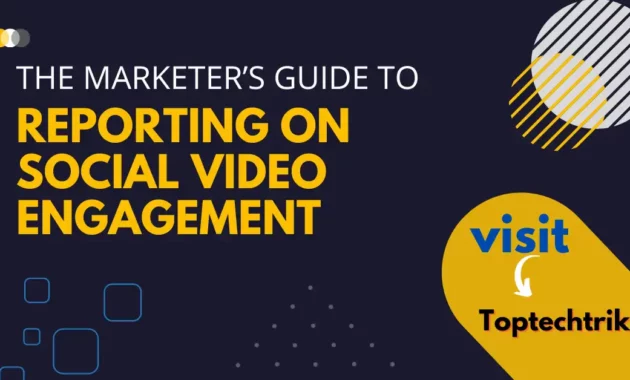Social video engagement is one of the hottest topics in marketing these days, with companies large and small trying to figure out the best way to measure its effectiveness. In this guide, we’re going to teach you the basics of how to report on social video engagement, so that you can track your progress and optimize your campaigns accordingly.
Social media is an essential tool for any business, and one of the most important ways you can measure its success is through social video engagement. In this guide, we’ll teach you everything you need to know about tracking social video engagement so that you can see the progress your campaigns are making.
Social media is an incredibly powerful marketing tool, but it can also be a little tricky to measure the success of your campaigns. In this guide, we’re going to show you how to report on social video engagement using the right tools and metrics.
What is social video engagement?
The definition of social video engagement is “the number of times a social media video has been watched and shared.” Whether you are an individual brand, agency, or product launch team, measuring and reporting social video engagement is essential to understanding the success of your videos.
There are a few key metrics to track when measuring social video engagement:
1. Total time watched
2. Unique viewers
3. Total shares
The different types of engagement
In order to measure the success of your social video marketing campaigns, you need to track the various types of engagement. This guide will outline the most common types of social video engagement and provide tips on how to measure and track them.
The three main types of social media engagement are likes, shares, and comments.
Here are some tips on how to track each:
Likes: To track the number of likes your social video has received, use a tool like Klout or SocialBee. Simply enter the URL of your video, and the tool will tell you how popular it is among its respective social media audience.
Shares: To track the number of shares your social video has received, use a tool like ShareThis or SumoMe. Enter the URL of your video, and the tool will tell you how many people have shared it on their respective social media networks.
Comments: To track the number of comments your social video has received, use a tool like Hootsuite or FollowerWerks. Enter the URL of your video, and the tool will tell you how many people have commented on it.
How to measure social video engagement

There are a few different ways to measure social video engagement, but the most common metric is views. One way to measure views is by counting the number of times people have watched a video. Another way to measure views is by measuring how many people have interacted with a video, such as liking or commenting on it.
Some other metrics that can be used to measure social video engagement include:
– Shares: How many times a video has been shared on social media platforms like Facebook and Twitter
– Likes: How many “likes” a video has received from other users
– Comments: How many comments a video has received
The importance of measurement when marketing social videos
Social media has become an essential part of marketing for businesses of all sizes. Whether you are a small business or a large corporation. Social media is a powerful tool that can help you connect with your customers and build relationships. But what good is social media if you can’t measure the impact it has on your business?
The first step in measuring the success of your social videos is to create engagement metrics. Engagement metrics are measures of how engaged your audience is with your content. There are a variety of engagement metrics that you can use to measure the success of your social video campaigns, including likes, shares, comments, and interactions.
Once you have created a list of engagement metrics, it’s time to start tracking them. Use tools like Hootsuite or SocialBee to track the number of likes, shares, and comments on your social media posts throughout the day. You can also use analytics software to track which posts generate the most engagement. This information will help you determine which posts are most effective in driving traffic and leads to sales.
By using measurement tools and tracking engagement metrics. You can ensure that your social videos are successful in reaching and converting your target audience.
The different types of data that can be reported on social video engagement
There are a lot of different ways to measure social video engagement, and each one has its own set of pros and cons. In this guide, we’ll outline the most common metrics and explain how to report them.
First and foremost, it’s important to understand the different types of data that can be reported on social video engagement. There are three main categories: brand awareness, brand recall, and customer conversion.
Below we’ll explore each metric in more detail:
Brand Awareness: This is the most basic measure of social video engagement. It tracks how many people have seen your videos and whether they have recognized your branding in them.






